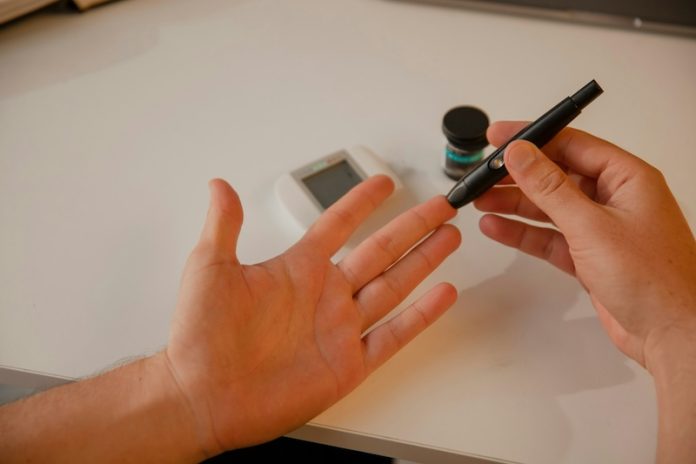
Prediabetes is like a warning sign that your blood sugar levels are higher than normal but not yet high enough to be considered type 2 diabetes. It’s an important stage because, with the right changes, it’s possible to reverse it and prevent type 2 diabetes from developing. Understanding what causes prediabetes and how to manage it can make a big difference in your health.
Prediabetes usually starts when your body becomes resistant to insulin. Insulin is a hormone that helps your cells absorb glucose (sugar) from your blood to use for energy. When your body becomes resistant to insulin, the glucose doesn’t get absorbed properly.
Instead, it starts to build up in your bloodstream. This makes your blood sugar levels go up, setting the stage for prediabetes. If this process continues without any changes, it can turn into type 2 diabetes.
One of the main reasons people develop prediabetes is because of excess body weight, especially if fat is stored around the belly. Belly fat is not just extra weight; it is actually active tissue that releases chemicals and hormones that can cause inflammation.
This inflammation makes it harder for insulin to work properly. Research has shown that this kind of fat is particularly dangerous for insulin resistance.
Living a sedentary lifestyle is another major factor. When people do not get enough physical activity, their bodies become less efficient at using insulin and processing glucose. On the other hand, regular exercise helps your muscles use glucose more effectively.
When you exercise, your muscles take in more glucose from your blood, which lowers your blood sugar levels. A study published in the American Journal of Preventive Medicine in 2019 showed that even small increases in physical activity can help prevent or even reverse prediabetes.
Genetics also play a part in developing prediabetes. If you have a family history of diabetes, your chances of getting prediabetes are higher.
Some people inherit genes that make them more likely to be insulin resistant or have problems with the cells in the pancreas that produce insulin. While you can’t change your genes, knowing your family history can help you take steps earlier to prevent problems.
Your diet has a huge impact on your risk of prediabetes. Eating too much red meat, processed food, and sugary drinks can raise your blood sugar levels and make insulin resistance worse. On the flip side, eating a balanced diet with plenty of fruits, vegetables, whole grains, and lean proteins can help keep your blood sugar levels in check.
A major study published in The Lancet found that people who made healthy changes to their diet were 50% less likely to develop type 2 diabetes after being diagnosed with prediabetes.
Age is another risk factor. As people get older, especially after age 45, their risk of prediabetes increases. This is partly because muscle mass decreases and body fat tends to increase with age.
Less muscle mass means less tissue to absorb glucose, which can make it harder to manage blood sugar levels. Although aging is something you can’t control, staying active and eating well can help offset its effects.
One factor that is often overlooked is sleep. Poor sleep, either not enough or too much, can affect your body’s ability to manage blood sugar. Studies have shown that when people don’t sleep well, their hormones get out of balance, and this can lead to weight gain and increased blood sugar levels.
Research in the Annals of Epidemiology showed that both short and long sleep durations are linked to a higher risk of prediabetes.
Fortunately, prediabetes can be managed and even reversed with the right lifestyle changes. Regular exercise, such as walking, jogging, or swimming, helps your body use insulin better and reduces blood sugar levels.
Eating a diet full of whole foods like vegetables, lean proteins, and whole grains instead of sugary snacks and processed foods can also make a big difference. Losing even a small amount of weight—about 5% to 7% of your body weight—can lower your risk of moving from prediabetes to type 2 diabetes.
Getting enough good-quality sleep is also important. This helps regulate hormones that control hunger and blood sugar levels. Managing stress through relaxation techniques like meditation, yoga, or simple breathing exercises can also help, as stress hormones can raise blood sugar levels.
In summary, prediabetes is a clear sign that your body is struggling to manage blood sugar. However, it’s also an opportunity to take action and prevent more serious health problems. By understanding the causes and making healthier lifestyle choices, it is possible to reverse prediabetes and lower your risk of developing type 2 diabetes.
Regular exercise, a balanced diet, good sleep, and keeping a healthy weight can make a big difference. Taking control of your health today can prevent bigger problems in the future.
If you care about diabetes, please read studies about diabetes and vitamin B12, and the right diet for people with type 2 diabetes.
For more health information, please see recent studies about how to eat smart with diabetes, and turmeric and vitamin D: a duo for blood pressure control in diabetic patients.
Copyright © 2025 Knowridge Science Report. All rights reserved.



